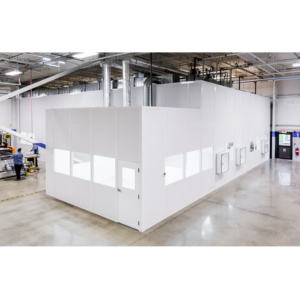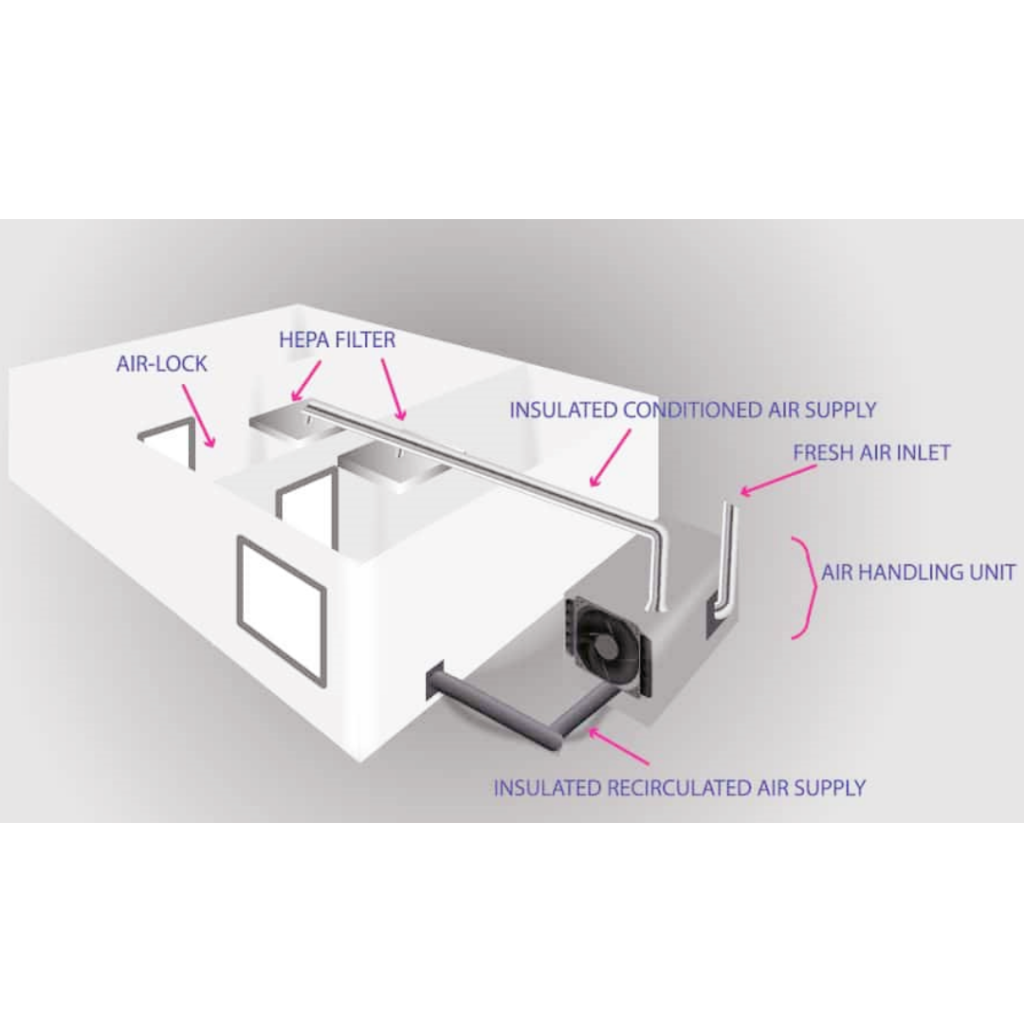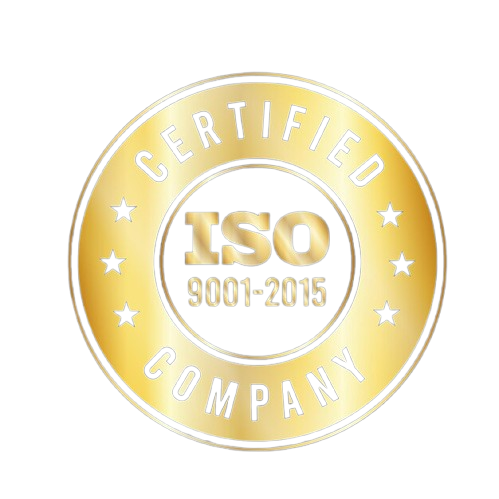
Cleanrooms require strict contamination control to ensure that sensitive products, equipment, and procedures remain safe and free from any impurities. In environments where personnel or materials must be transferred between controlled and non-controlled spaces, the risk of contamination increases. This is where cleanroom pass boxes become essential. Cleanroom pass boxes provide a safe, contamination-free way to transfer materials in and out of cleanrooms without compromising the sterile environment.
This article will dive into the importance of cleanroom pass boxes, their key features, the different types available, and best practices for using pass boxes to ensure safe, sterile transfers in contamination-sensitive environments.
What is a Cleanroom Pass Box?
A cleanroom pass box is an enclosed chamber installed in the wall or partition between two rooms, typically between a controlled cleanroom and an adjoining non-controlled area. The primary purpose of a pass box is to allow materials, samples, and equipment to be safely transferred between these spaces without introducing contaminants. Pass boxes are especially common in industries such as pharmaceuticals, biotechnology, electronics, and healthcare, where maintaining strict cleanliness standards is crucial to product quality and safety.
Why Cleanroom Pass Boxes are Essential for Safe Transfers
Moving materials in and out of a cleanroom without a pass box means that personnel must enter and exit the cleanroom, which increases the risk of contamination from clothing, skin, or airflows. Cleanroom pass boxes mitigate this risk by providing a buffer zone for materials to pass between rooms without the need for personnel movement.
In addition to improving contamination control, pass boxes contribute to the overall efficiency of cleanroom operations by allowing quick, safe transfers that minimize disruption to the cleanroom environment.
Key benefits of cleanroom pass boxes include:
- Reduced Cross-Contamination: By isolating materials from personnel movement, pass boxes help prevent contaminants from entering the cleanroom.
- Increased Operational Efficiency: Pass boxes streamline material transfers, reducing the need for personnel to enter or exit the cleanroom.
- Compliance with Cleanroom Standards: Cleanroom pass boxes are designed to meet ISO and GMP standards, supporting regulatory compliance in sterile environments.
Types of Cleanroom Pass Boxes
Different types of pass boxes are available to suit various cleanroom needs and contamination control levels. Here are the main types of cleanroom pass boxes:
1. Static Pass Box
A static pass box is the most common type, designed for transferring materials between clean and non-clean areas without actively controlling airflow. Static pass boxes are usually equipped with interlocking doors on either side, preventing both doors from opening simultaneously and reducing the risk of cross-contamination.
Static pass boxes are ideal for applications that don’t require active contamination control or airflow but still need a secure environment to transfer materials. These pass boxes are commonly used for less critical cleanroom areas.
2. Dynamic Pass Box
A dynamic pass box is equipped with High-Efficiency Particulate Air (HEPA) or Ultra-Low Penetration Air (ULPA) filters that actively control the airflow within the pass box chamber. Dynamic pass boxes create a mini-cleanroom environment inside the pass box, maintaining a positive pressure that prevents contaminants from entering when the doors are opened.
Dynamic pass boxes are ideal for higher-grade cleanrooms where a strict contamination-free transfer is essential. They are commonly used in critical areas, such as pharmaceutical and biotechnological cleanrooms, to ensure that sensitive products and equipment remain uncontaminated during transfers.
3. UV-C Pass Box
A UV-C pass box is equipped with ultraviolet (UV-C) germicidal lamps that sterilize materials inside the pass box before they are transferred. The UV-C light kills bacteria, viruses, and other microorganisms, providing an added layer of contamination control. UV-C pass boxes are particularly useful in healthcare, pharmaceutical, and biotech cleanrooms where microbial control is essential.
UV-C pass boxes can be either static or dynamic, depending on the specific cleanroom requirements. These pass boxes are also useful for transferring tools or materials that cannot be sterilized by other means.
4. Air Shower Pass Box
An air shower pass box combines the functions of a pass box with an air shower system. Inside the pass box, high-velocity air jets blow off particles and contaminants from the material’s surface before it is transferred. This type of pass box is ideal for environments that require extremely stringent contamination control, such as semiconductor manufacturing cleanrooms, where even small particles can compromise product quality.
Key Features of Cleanroom Pass Boxes
The design and functionality of cleanroom pass boxes vary depending on the type, but certain key features are essential for effective contamination control:
1. Interlocking Doors
Most pass boxes come with interlocking doors that prevent both doors from opening at the same time. This design ensures that the pass box remains sealed, keeping contaminants from moving between rooms. Interlocking doors are a standard feature in both static and dynamic pass boxes, supporting safe transfers by maintaining controlled environments on each side.
2. HEPA and ULPA Filtration
Dynamic pass boxes are often equipped with HEPA or ULPA filters to ensure that air entering the pass box is free from contaminants. HEPA filters can remove 99.97% of particles as small as 0.3 microns, while ULPA filters capture even finer particles, down to 0.12 microns. This filtration is crucial in high-grade cleanrooms where particle control is critical, ensuring that materials remain sterile throughout the transfer process.
3. UV-C Germicidal Lamps
In UV-C pass boxes, ultraviolet lamps are used to sterilize the contents within the pass box chamber. UV-C light effectively kills bacteria, viruses, and other microorganisms, making it a valuable addition for applications that require microbial control. UV-C lamps typically have timers, allowing users to control the exposure time based on the materials being transferred.
4. Audible and Visual Indicators
Pass boxes are often equipped with indicators, such as lights or alarms, to show when a door is open, closed, or locked. These indicators help personnel monitor the pass box’s status and ensure that both doors are not opened simultaneously. Visual and audible indicators support safe operation, minimizing the risk of accidental cross-contamination.
5. Stainless Steel Construction
To maintain hygiene and ease of cleaning, most cleanroom pass boxes are constructed from stainless steel. Stainless steel is non-porous, corrosion-resistant, and easy to sterilize, making it the ideal material for contamination-sensitive environments. Its smooth surface prevents the accumulation of dust and microorganisms, ensuring that the pass box remains clean and free from contaminants.
6. Pressure Control Systems
In dynamic pass boxes, positive pressure systems are often used to prevent contaminants from entering the pass box when the doors open. Pressure control maintains a sterile environment within the pass box, making it especially valuable for transferring sensitive items like biological samples or pharmaceuticals.
Applications of Cleanroom Pass Boxes
Cleanroom pass boxes are essential for maintaining sterile conditions during material transfers in various industries. Here’s how different sectors benefit from using pass boxes:
1. Pharmaceuticals and Biotechnology
In the pharmaceutical and biotechnology industries, contamination control is vital for producing safe and effective drugs, vaccines, and biologics. Pass boxes allow pharmaceutical products, raw materials, and lab equipment to be transferred into cleanrooms without introducing contaminants. Dynamic pass boxes are particularly useful in these industries due to their HEPA filtration systems, which help maintain strict cleanliness standards.
2. Electronics and Semiconductor Manufacturing
Electronics and semiconductor manufacturing require particle-free environments, as even minor contamination can damage sensitive components. Static pass boxes with interlocking doors are commonly used in electronics cleanrooms to prevent particles from entering cleanrooms during material transfers. Dynamic or air shower pass boxes may also be used in high-sensitivity areas where contamination control is especially critical.
3. Healthcare and Medical Device Manufacturing
In healthcare and medical device manufacturing, maintaining sterility is critical for patient safety and regulatory compliance. Pass boxes with UV-C sterilization help ensure that medical devices, instruments, and samples remain free from microbial contamination during transfers. In hospitals, pass boxes are also used to transfer items into sterile rooms or isolation units, preventing the spread of infectious agents.
4. Food and Beverage Processing
In food and beverage processing facilities, pass boxes are used to transfer ingredients, packaging materials, and finished products in and out of sterile environments. UV-C pass boxes are beneficial in food processing as they reduce the microbial load on items before they enter cleanrooms, supporting high hygiene standards essential for food safety.
Best Practices for Using Cleanroom Pass Boxes
Using pass boxes effectively requires adherence to best practices to ensure that contamination control remains uncompromised. Here are some recommended practices for safe material transfers with cleanroom pass boxes:
1. Regular Cleaning and Maintenance
Pass boxes should be cleaned and sanitized regularly to prevent the buildup of contaminants. Stainless steel construction makes cleaning easy, but surfaces should be disinfected with approved agents based on cleanroom protocols. Filters in dynamic pass boxes should also be replaced periodically to maintain effective particle filtration.
2. Monitor and Replace UV-C Lamps
If using a UV-C pass box, it’s essential to monitor the performance of UV-C lamps. Over time, UV-C lamps lose effectiveness and must be replaced to maintain microbial control. Establishing a replacement schedule based on manufacturer recommendations can help ensure continued sterilization efficacy.
3. Adhere to Interlocking Door Protocols
To prevent cross-contamination, personnel must ensure that both pass box doors are never opened simultaneously. The interlocking system should be inspected regularly to confirm it is functioning correctly, and personnel should be trained to follow door protocol at all times.
4. Use Visual and Audible Indicators for Safe Operation
Indicators that show the pass box status (such as open, closed, locked, or sterilizing) help personnel use the pass box safely and efficiently. Always check the indicators before opening the pass box doors to avoid accidental contamination.
5. Implement Regular Air Filter Replacement in Dynamic Pass Boxes
HEPA and ULPA filters in dynamic pass boxes must be replaced according to a schedule to ensure effective filtration. Routine air quality checks within the pass box can also help identify when filter replacements are necessary.
Ensuring Safe Transfers with Cleanroom Pass Boxes
Cleanroom pass boxes are essential for maintaining contamination control in environments where materials must frequently move between sterile and non-sterile areas. By providing a controlled, contamination-resistant chamber for material transfers, pass boxes prevent cross-contamination, support regulatory compliance, and contribute to the overall efficiency of cleanroom operations.
At Wise Link, we specialize in providing high-quality cleanroom pass boxes that meet the diverse needs of industries like pharmaceuticals, biotechnology, electronics, and healthcare. With options including static, dynamic, and UV-C sterilization pass boxes, we deliver custom solutions designed to maintain sterility and optimize safe transfers in cleanrooms. Contact us today to learn more about our cleanroom pass boxes and how they can enhance contamination control in your facility.
FAQs
- What is the purpose of a cleanroom pass box?
A cleanroom pass box allows materials to be safely transferred between clean and non-clean areas without compromising the sterile environment of the cleanroom. - How does a dynamic pass box differ from a static pass box?
Dynamic pass boxes have HEPA or ULPA filters that control airflow within the chamber, providing an additional level of contamination control compared to static pass boxes. - Why is UV-C sterilization used in pass boxes?
UV-C light effectively kills bacteria, viruses, and microorganisms, making UV-C pass boxes useful for transfers where microbial contamination control is critical. - What industries benefit from cleanroom pass boxes?
Industries such as pharmaceuticals, biotechnology, electronics, healthcare, and food processing benefit from using cleanroom pass boxes to maintain contamination control during material transfers. - How often should filters in dynamic pass boxes be replaced?
HEPA and ULPA filters should be replaced based on manufacturer recommendations, typically every six months to a year, or as required by air quality testing.
Enhance Your Cleanroom with Safe, Reliable Pass Boxes
Optimize Material Transfers with Our Advanced Cleanroom Pass Box Solutions. Contact Wise Link Today for a Free Consultation and Custom Quote!





